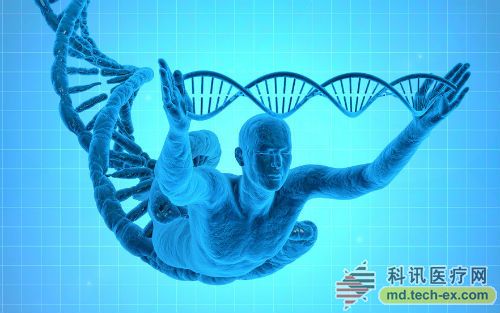Release date: 2015-08-19

Gene therapy refers to the introduction of a foreign normal gene into a target cell to correct or compensate for diseases caused by genetic defects and abnormalities for therapeutic purposes. According to GlobalData research data, the total number of transactions in the global gene therapy market increased from 16 cases in 2013 to 36 cases in 2014. During the same period, the comprehensive value of transactions surged from 122.8 million US dollars to 4.9 billion US dollars, which represents 40 times. growth of.
Since 2006, gene therapy has made a lot of progress in scientific research, and important achievements have been published in top international journals. The technology has matured and been recognized by the academic community. From the statistics of clinical experiments, the safety and effectiveness of gene therapy have made great progress.
The EU EMA took the lead in approving the sale of gene therapy Glybera in 2012, making it the first gene therapy product to be approved for marketing in Western countries. Although the US FDA has not yet approved a gene therapy product for sale, it has set up a new department at its Center for Biological Products Evaluation and Research to help guide the evaluation of related products.
As early as 2003, China has approved the first gene therapy drug, “Recombinant Human p53 Adenovirus Injection†(trade name “Jian Zaishengâ€) from Shenzhen SiBiono Gene Technology Co., Ltd. According to Academician Wei Yuquan, at present, there are more than 20 teams in China engaged in relevant basic research work, and the number of articles distributed each year accounts for 1/4 of the total number of articles in the world, among which the most relevant articles on tumors.
The gene therapy market has broad prospects, and pharmaceutical giants are vying to lay out

In overseas markets, more and more companies are beginning to see the value of the gene therapy market. In addition to the newcomers like Bluebird, Celgene, Bayer, Pfizer and other major pharmaceutical companies have also invested in gene therapy through cooperative research and development or market rights buyouts, and more and more pharmaceutical giants have joined the market. In the fight.
On February 11th, Sanofi's American Jianzan Pharmaceuticals plans to spend 845 million alliance gene therapy company Voyager Therapeutics. Voyager will lead the collaborative project for Parkinson's disease, hereditary spinal ataxia, Huntington's disease and other central nervous system disorders, and its lead candidate, VY-AADC01, has entered clinical trials in Parkinson's disease.
In April, Bristol-Myers Squibb (BMS) and the Dutch biotechnology company uniQue, the leader in gene therapy, signed an exclusive cooperation agreement of up to $1 billion to acquire uniQue's gene therapy technology platform to develop gene therapy. Up to 10 targets for cardiovascular disease.
On May 5th, GlaxoSmithKline (GSK) officially submitted a listing application for ADA-SCID (severe combined immunodeficiency syndrome caused by adenosine deaminase deficiency) gene therapy to the European Union Food and Drug Administration (EMA). The listing application is based on the results of the previous 18 patients, all of whom survived to date, and the earliest treated patients have survived to more than 11.5 years to date. 92% of patients achieved results.
Breakthrough study of the "Big Eight" in the field of gene therapy
In fact, although so many companies are actively involved in the field of gene therapy, there is still a certain distance from the wide application of this technology in the clinical field. Therefore, in the field of scientific research, there are still a group of scientists committed to relevant scientific research, and also achieved some breakthrough results. Below, we will list the recent breakthroughs in gene therapy published in top journals.
Nature: Scientists take the first step in gene therapy for mitochondrial diseases (July 15)

Mitochondria are distributed throughout every cell of the body, converting food into energy. One in every 6500 babies suffers from severe mitochondrial disease, which causes the body to lack energy, muscle weakness, blindness, heart defects and even death. In a study published in the journal Nature on July 15, American scientists said they had taken the first step in the treatment of mitochondrial diseases.
This latest breakthrough overcomes the long-standing stumbling block in the use of human stem cells to treat diseases. To conduct the study, the scientists collected skin cells from the subjects, which mainly included children with mitochondrial defects and a few middle-aged men. The second step is to obtain the nucleus of these skin cells and implant them into the cytoplasm of healthy donor cells. Through this technology researchers create healthy mitochondrial embryonic stem cells. [detailed]
Science Supplement: Gene Therapy Regains Vision for Blind People (July 15)
In the past few years, a gene therapy that injected healthy genes into the eye to repair mutations has become the most potential therapeutic approach for congenital and degenerative blindness. The first trial of gene therapy for blindness was conducted in 2007 with 10 volunteers with Rayber's congenital cataract.
The study experiment injected a harmless virus into the eye of a subject carrying a gene that normally copies RPE65. After receiving treatment, some subjects began to see the fingers waving in front of their eyes, and even read the six lines of information on the chart, while others were able to perform obstacle training in dim light. Related research was published in the July 15 issue of Science Translational Medicine. [detailed]
Science Supplement: A new breakthrough in gene therapy, successfully recovering hearing in deaf mice (July 8)
On July 8, online in a study published in the journal Science Translational Medicine, scientists from Boston Children's Hospital and Harvard Medical School used gene therapy to successfully repair hearing in deaf mice. Currently, these treated mice have maintained hearing ability for more than 2 months. [detailed]
Lancet Supplement: Gene therapy for new breakthroughs in cystic fibrosis (July 3)

Cystic fibrosis CF may affect multiple parts of the body, with the most severe effects on the lungs and digestive system. And this is a genetic disease, and there is still no cure. However, a group of researchers recently found that patients with cystic fibrosis were supplemented with normal mutant disease genes, and these patients showed fewer symptoms than the control. The results of this gene therapy II clinical trial were published on July 3, Lancet. In the journal Respiratory Medicine. [detailed]
Nature Subsidiary: Gene Therapy or Alternative Cardiac Pace (June 22)
With a genetic technology developed by Israeli researchers, heart patients may no longer need a pacemaker to keep the heart beating. Instead, they use a light-sensitive gene injected into the heart to replace the electronic device, using a blue beam to pace the heart.
The new cardiac pacing and cardiac resynchronization treatment technology was developed by Dr. Leo Gpstein and Dr. Judy Nusinovic of the Rappaport School of Pharmacy at the Israel Institute of Technology and Rambam Medical Center. The results of one of the studies in the technology were published in the June 22 issue of Nature Biotechnology. [literature]
Oncotarget: A new breakthrough in gene therapy, hopefully cure prostate cancer (May 12)
Even with the best treatment, patients with metastatic hormone-refractory prostate cancer have a median survival of only 2-3 years. In order to better treat these patients, scientists from the VCU Massey Cancer Center and the VCU Institute of Molecular Medicine (VIMM) have developed a unique therapy that uses microbubbles to target the combination of viral gene therapy to drive cancer development. The test drug for a specific gene is directly presented to the patient's cancer site. Related research was published in the May 12 issue of Oncotarget. [detailed]
Science: Opening the door to new cancer gene therapy (April 16)

Scientists have discovered that a protein can boost immunity to viruses and cancer, opening the door to new therapies. Some mouse and human cell experiments have shown that this protein promotes the proliferation of cytotoxic T cells, which kill cancer cells and virus-infected cells. This is an unexpected study, because the new protein does not have any known function and is not like any other protein.
Leading the study is researchers from Imperial College London, who are now developing a gene therapy to enhance these anti-infective cells and hope to launch human trials within three years. Related papers were published in the April 16 issue of Science. [literature]
Blood: Stem cell gene therapy is expected to be used to treat sickle-type anemia (March 2)
Dr. Donald Kohn from the UCLA Eli and Edythe Broad Center for Regenerative Medicine and Stem Cell Research published a method in the March 2 issue of Blood that corrects the mutated genes that cause sickle cell anemia. This is the first time that genetic correction has been used to generate normal red blood cells.
Source: Bio-Exploration
Nutrition Biscuit,Black Tartary Buckwheat Sachima,Health Nutritious Tartary Buckwheat Twist,Xylitol Sesame Buckwheat Crisp
Huantai Biotechnology Co., Ltd. , https://www.huantaifds.com